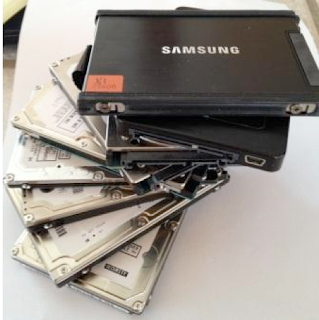If you’re looking for an effective way to organize a cluttered hard drive on one of your business’ computers, you may want to consider drive partitioning. A simple form of virtualization, partitioning essentially creates virtual hard drives that share storage space with your physical drive. Understanding what occurs during partitioning, as well as why you would want to partition, can serve as an introduction to further applications of this process, such as creating virtual servers and operating systems.
Primary Partitions
To partition your hard drive does not impact it in any physical way, but it divides the space into separate virtual hard drives, although only one of these will remain the active partition that your computer uses to boot itself.
With most hard drives, you can primarily partition a maximum of three times, leading to four separate virtual hard drives. Each time you partition the hard drive, you cut the size of the drive in half. For example: if you partition a 100 GB hard drive only once, each virtual copy will have about 50 GB. If you partition again, they’ll each have about 33 GB, and if you partition a third time, they’ll each have a maximum 25 GB.
Extended Partition
If you opt to divide each primary partition into a smaller virtual drive, you create what’s known as an extended partition. Each primary partition can have a maximum of six extended partitions, for a total of 24. Remember that as you continue to partition, you cut the size of the hard drive in half. In essence, if your total physical hard drive space is 100 GB, and you maximize the number of extended hard drives you can create, each virtual hard drive will have a maximum space of a little over four GB.
You can create extended partitions on one or all of your primary partitions; you do not need to divide each primary partition if not desirable. For example, your active partition could remain the largest drive on your computer, while the other primary partitions are further divided.
Applications of Partitioning
What use does an individual or business person have in partitioning hard drives? The size of the total hard drive does not change, so don’t look at virtual drives as a way to add space. Instead, look at it as a way to organize, reducing wasted space in addition to allowing multiple operating systems.
Organization
With partitioning, you can file all of the data associated with specific projects on specific drives. This is a simple way to organize and access files only as necessary, as well as to eliminate desktop clutter.
Having separate virtual hard drives is especially useful in businesses that allow BYOD, or “bring your own device.” Employees can keep a separate location for all of their personal files and only bring up the work file partition when they’re working. This could prove useful in the event of downloads from personal sites that include spyware, although it’s not a total malware prevention method.
Reducing Wasted Space
One disadvantage of having a large hard drive is that your files take a small fraction of the drive, leading to a large amount of wasted storage space. If you partition the hard drive, the fraction shoots up, leading to less wasted space. For example, if you had 50 GB worth of data on a 100 GB hard drive, you were using 50 percent of your drive. If you partition the drive in half, you’ll be using 100 percent of one of your drives, and file systems won’t have as much room to work with, and are less likely to create unnecessary copies of files.
Multiple Operating Systems
Some computers, like Macs, are set up to allow the use of operating systems other than the default one. Partitioning lets you enable multiple operating systems on a single computer or device. This can prove useful if you need to access files or servers in formats only available in a different operating system, but you prefer your own system the rest of the time.
If you partition your hard drive, you’ll create space for both operating systems. The operating system on the “active partition,” the main one, will boot up with your computer. If you need to switch from that operating system to the other, you simply access one of your virtual drives









0 comments:
Post a Comment